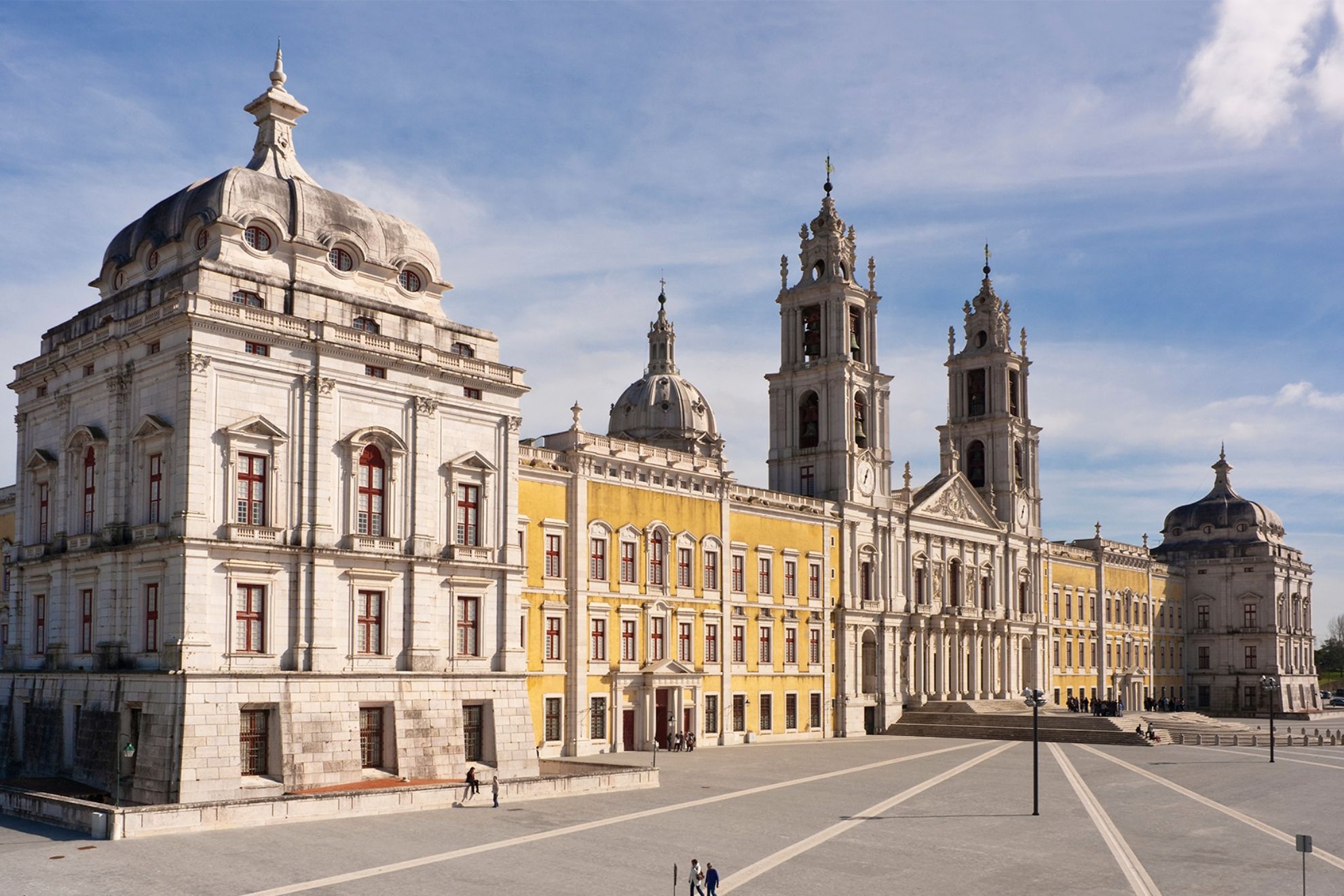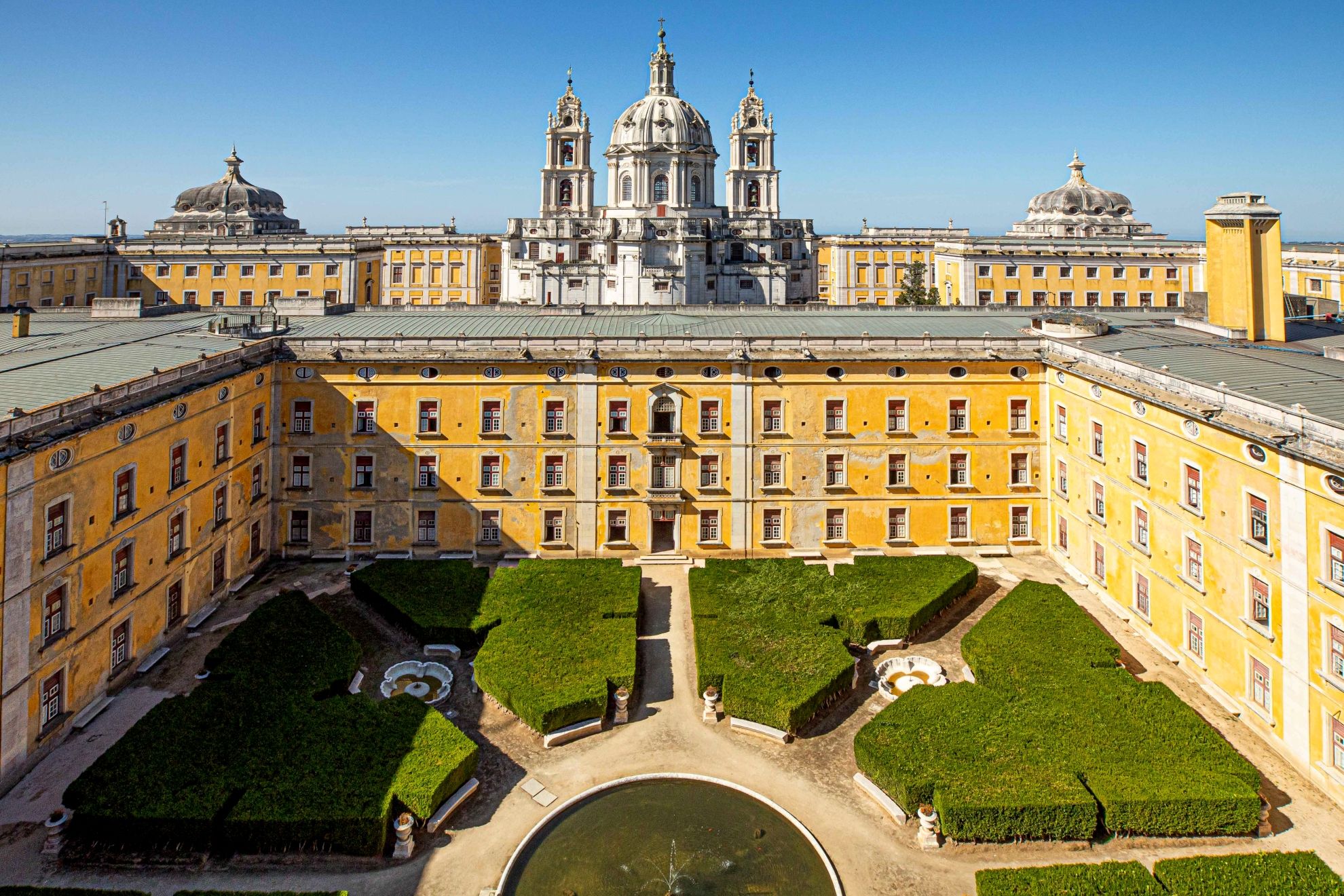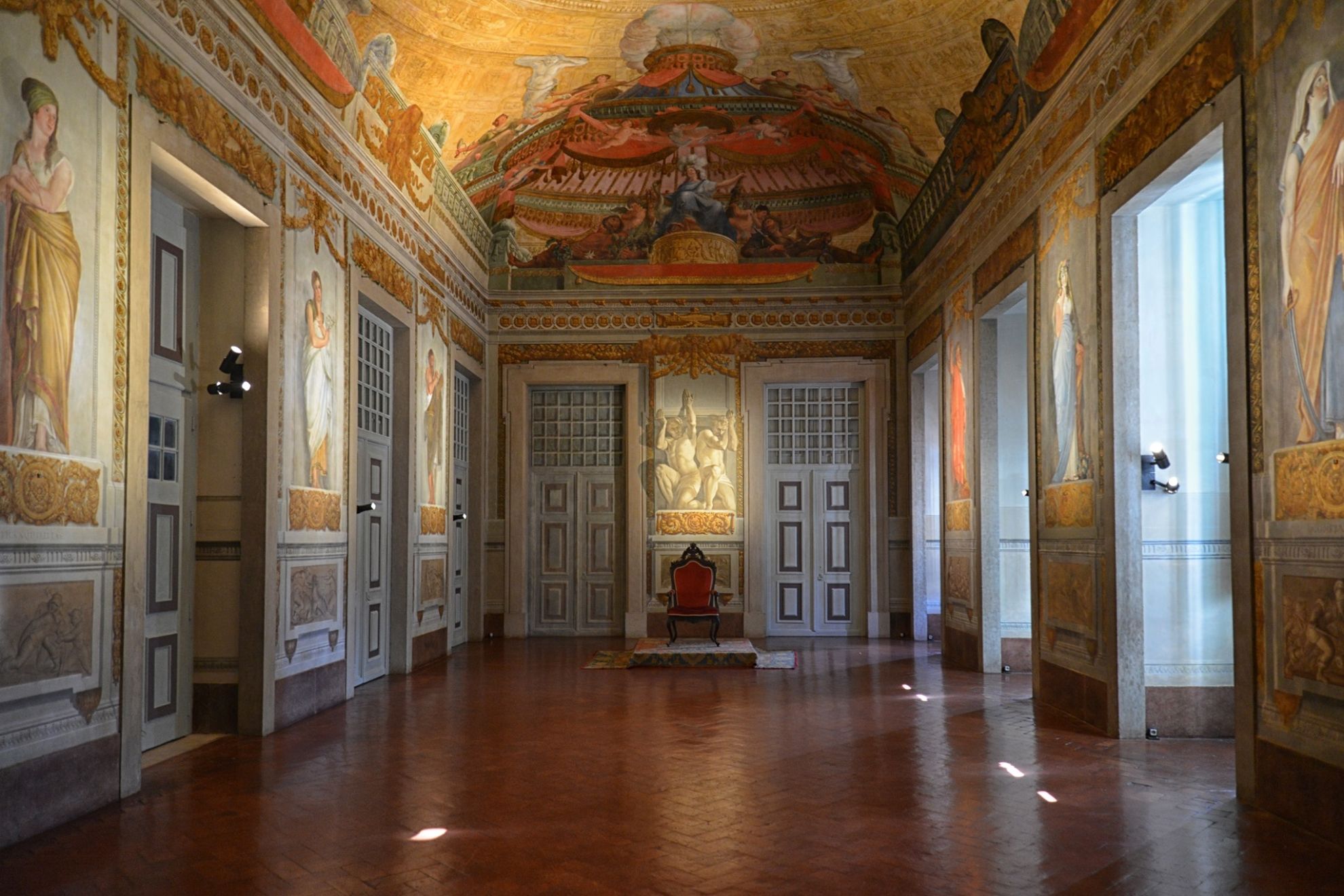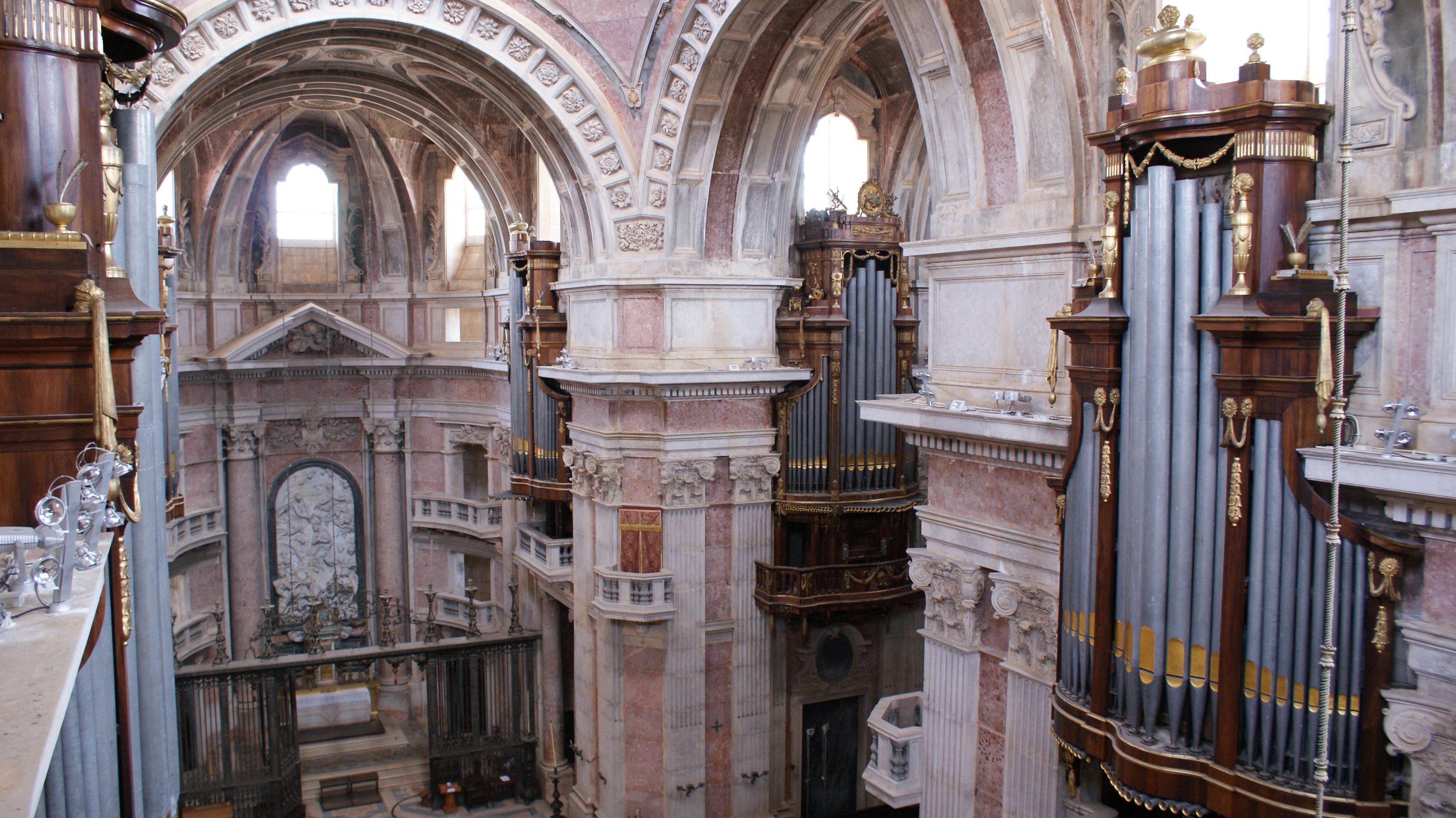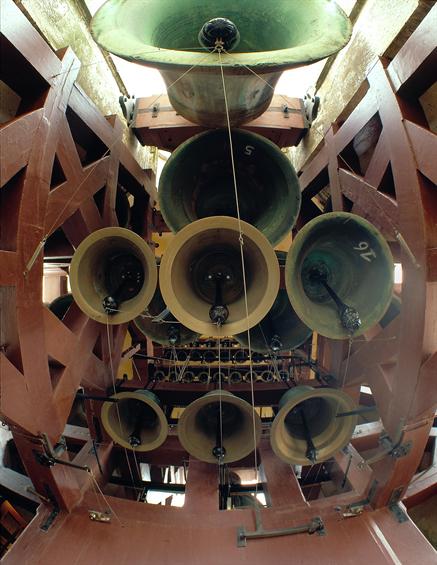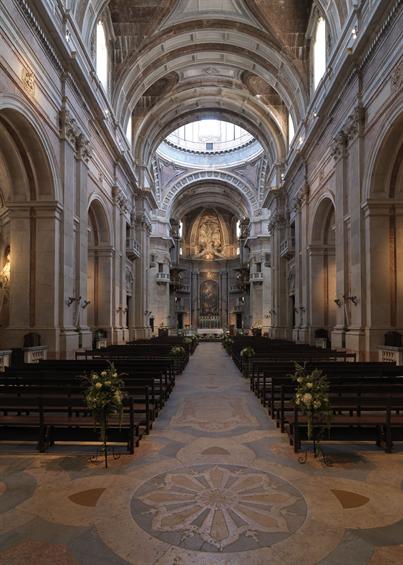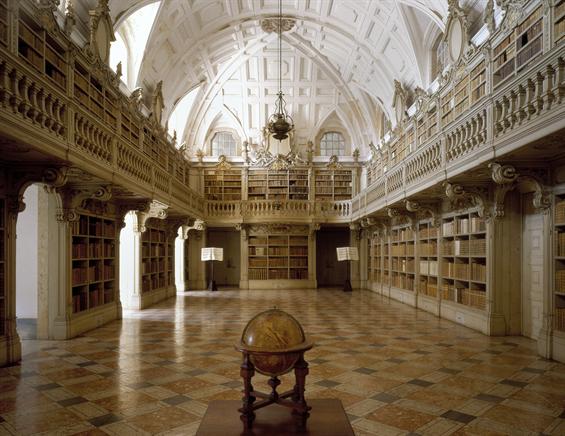The National Palace of Mafra is a baroque architectural ensemble, formed by a royal palace, basilica, convent, garden and game reserve. Its construction began in 1717 and the basilica was consecrated in 1730. It hosts important collections of Italian sculpture, Italian and Portuguese paintings, vestments, an imposing library, two carillons, six historical organs and an eighteenth-century infirmary. It was inscribed on the UNESCO World Heritage List since 2019.
The building of the Palace of Mafra was commissioned in 1711 by King D. João V to fulfil a vow for the birth of a firstborn son and is the most important monument of the Portuguese Baroque. The former royal estate covers more than 1200 hectares and the Palace has a floor area of about 38,000 m2, making this monument one of the largest in Europe.
For this Palace, King D. João V commissioned sculptures and paintings from Italian and Portuguese masters, Italian vestments and French tapestries and two carillons with 92 bells, in Flanders – the largest carillon of its time. It also includes a set of six historical organs in the basilica, an important library with about 30,000 books, the largest bookstore in a single room in Europe. The infirmary stands out in this convent, the only remaining room of that time.
It was a state residence during the reign of Prince D. João VI, and since the Napoleon invasions accommodated military barracks and was also a seasonal residence for the royal family. D. Manuel II, the last Portuguese monarch was staying in this palace when he was forced to move into exile on October 5, 1910.
